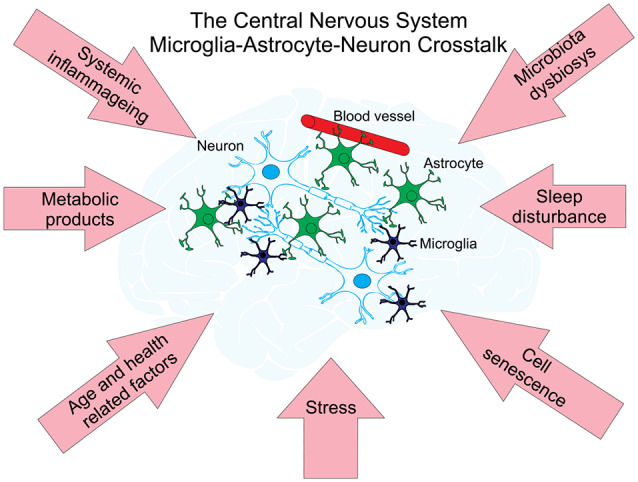Figure 2.

Neuronal networks—cell types and factors interacting with each other affect age-related diseases. There are three main types of cells within neural cellular networks. A neuron or nerve cell is an electrically excitable cell that communicates with other neurons via specialized connections called synapses. They are the basic (functional and structural) unit of nervous tissue and the central nervous system (CNS). Astrocytes support neuronal function by providing essential structural and nutritional support, neurotransmitter trafficking and recycling and may also contribute to brain information processing. Astrocytes function as versatile metabolic sensors of CNS milieu and play an important role in the maintenance of brain metabolic homeostasis (for a recent review see Marina et al., 2018). Microglia are the only immune cells that permanently reside in the CNS. In the past decade, studies on microglia have expanded from investigating their function as resident macrophages of the brain and mediators of injury, neuroinflammation and neurodegeneration (reviewed in Salter and Stevens, 2017; Tay et al., 2017) to understanding their origins and non-immunological roles in the CNS. Networks of these cells are under the influence of different factors affecting the development of age-related diseases (pink arrows) and are supporting their metabolism by the interchange of metabolic products with blood vessels.
